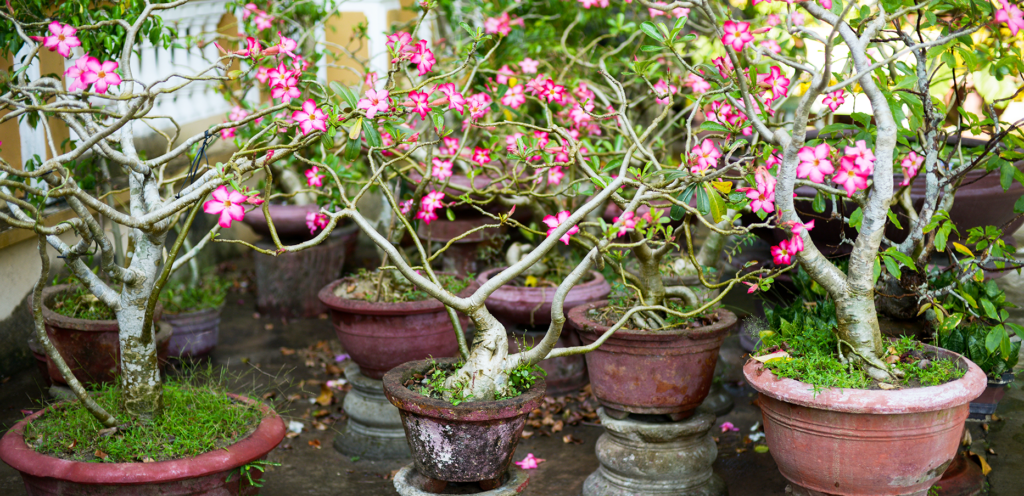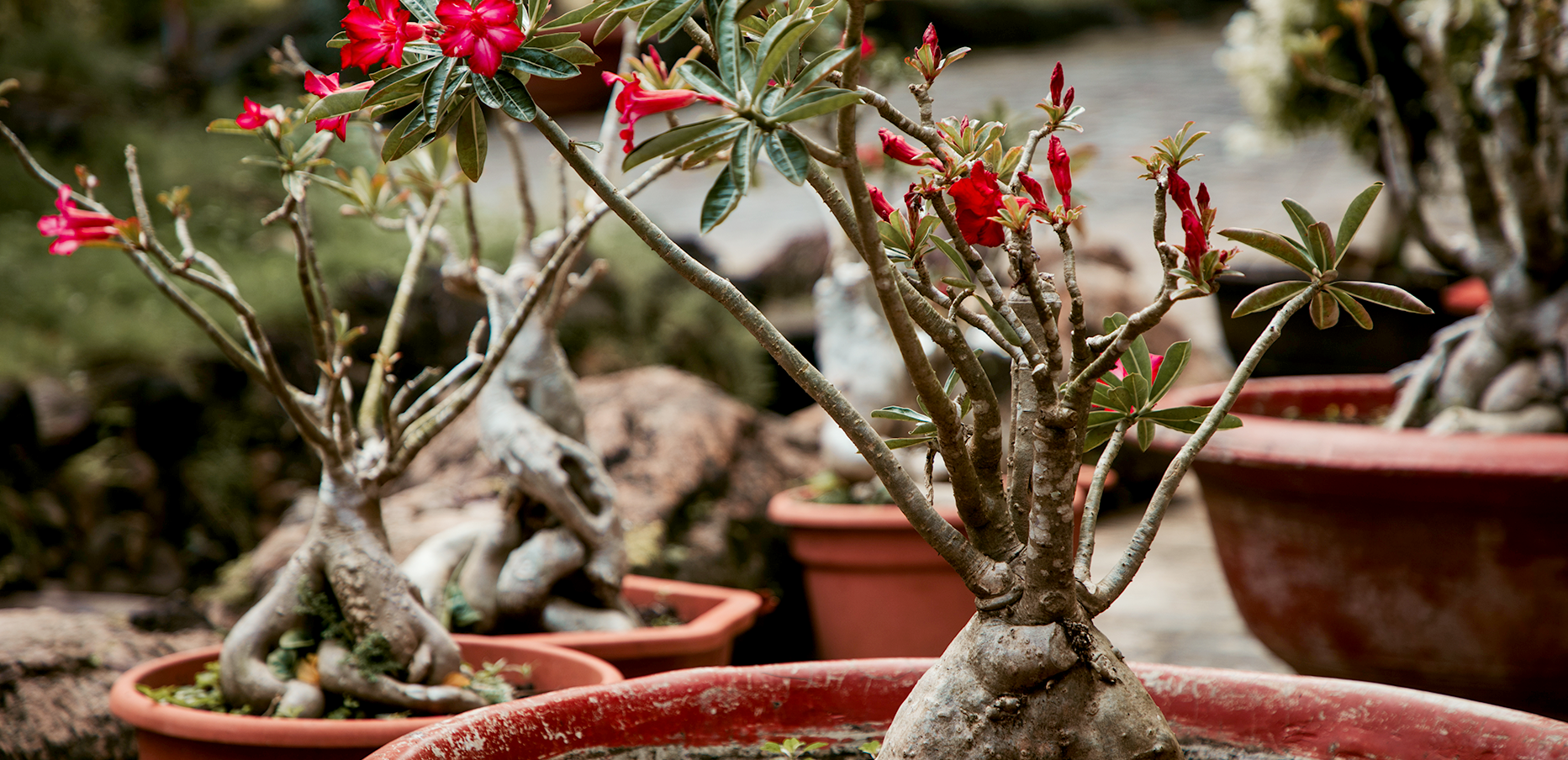The Adenium, or Desert Rose, is a captivating succulent shrub belonging to the Apocynaceae family. Native to the arid and semi-arid regions of Africa and the Arabian Peninsula, this plant has evolved remarkable adaptations to survive in harsh, water-scarce environments.
Unique Features:
Caudex: The most striking characteristic of the Adenium is its swollen base, the caudex. This specialized organ serves as a water reservoir, allowing the plant to endure prolonged periods of drought. The caudex can exhibit a wide range of shapes, from bulbous and bottle-shaped to more intricate forms that resemble twisted or gnarled wood.
Flowering Spectacle: Adeniums are renowned for their vibrant and showy flowers. These trumpet-shaped blooms appear in a kaleidoscope of colors, including shades of pink, red, white, purple, and even multi-colored varieties. The flowers attract pollinators like bees and butterflies, contributing to the plant’s reproductive success.
Leaf Variations: Adenium leaves are typically glossy and leathery, minimizing water loss through transpiration. Depending on the species and environmental conditions, some Adeniums may shed their leaves during periods of stress or dormancy.
Slow and Steady Growth: Adeniums are relatively slow-growing plants. This slow growth contributes to the development of their unique caudex shapes and allows for the formation of thick, woody stems.
Cultivation and Care:
Sunlight: Adeniums are sun-loving plants and require ample sunlight for optimal growth and flowering. They thrive in locations with at least 6 hours of direct sunlight daily. However, it’s crucial to acclimate young plants gradually to full sun to prevent sunburn.
Watering: Proper watering is paramount for Adenium’s health. Overwatering is a significant risk, leading to root rot and ultimately plant death. Water deeply and infrequently, allowing the soil to dry out completely between waterings.
Soil: A well-draining soil mix is essential for Adeniums. A cactus and succulent mix typically contains perlite or pumice and provides excellent drainage and aeration.
Fertilization: During the active growing season (spring and summer), fertilize lightly with a balanced, diluted fertilizer formulated for cacti and succulents. Avoid over-fertilizing, as it can damage the roots.
Temperature: Adeniums thrive in warm temperatures. They prefer temperatures between 65-85°F (18-29°C). Protect them from frost and prolonged cold periods.
Dormancy: In colder climates, Adeniums may enter a period of dormancy during the winter. During this time, reduce watering significantly and provide minimal fertilization.

Propagation:
Adeniums can be propagated through several methods:
Seeds: A common method that allows for genetic diversity. Seed-grown plants often exhibit a wide range of variations in caudex shape, flower color, and overall growth habit.
Cuttings: Stem cuttings can be rooted to produce new plants. This method is suitable for propagating specific varieties.
Grafting: This technique is often used to propagate rare or desirable cultivars. It involves grafting a scion (desired variety) onto a rootstock (typically a seedling).
Uses and Popularity:
Ornamental Plants: Adeniums are highly prized as ornamental plants due to their unique caudex shapes, vibrant flowers, and intriguing forms. They are popular choices for bonsai cultivation, allowing enthusiasts to create miniature, artistic specimens.
Medicinal Uses: In some regions, certain parts of the Adenium plant have been traditionally used for medicinal purposes. However, it’s important to note that all parts of the plant contain toxic compounds.
Collectors’ Items: Due to their unique characteristics and the availability of numerous cultivars, Adeniums have become highly sought-after by plant collectors.
Important Note:
All parts of the Adenium plant contain toxic compounds. Handle them with care and keep them out of reach of children and pets.
